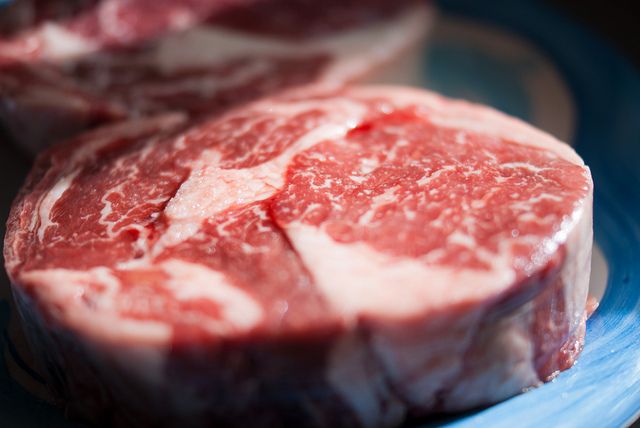
I once told my friends that, were a man to order his steak well-done on a date, that would be, in the words of Liz Lemon, a dealbreaker. Turns out, my snobbery was completely unwarranted. According to an article on Gilt Taste, some meat is actually improved by longer cooking times. As usual, it all depends on the cut.
Certain cuts are delicious rare. They're juicy and tender, even when the insides are practically purple. However, other pieces of the cow need to be more thoroughly blasted with heat in order to develop their full flavor potential. Take, for example, the ribeye.
According to writer Tom Mylan, ribeyes are "downright gross when cooked lack-and-bleu" because the fat that rims the meat needs to be rendered in order for it to be anything other than a weird, pasty mess. Flash-frying in a griddle won't do any good here. If you want to taste all that fatty, meaty goodness, you have to let the outside of the meat really cook.
Mylan goes onto describe several other reasons you might want to turn down the heat and up the cooking time. With less expensive cuts, there is often an issue of collagen and connective tissue. When undercooked, these fibers are chewy and unpalatable. They make your meal into an exercise in jaw strength. But when cooked through, they change texture and become much easier to cut.
Still find the idea that rare isn't always best a little hard to swallow? Mylan turns to food science expert Harold McGee to explain why meat benefits from a long, slow sear. As meat cooks, McGee writes in On Food and Cooking, "the physical change gives way to chemical change, and to the development of aroma as cell molecules break apart and recombine with each other to form new molecules that not only smell meaty, but also fruity and floral, nutty and grassy (esters, ketones, aldehydes)." Seriously, stop. You're making me hungry.
So next time you fire up the grill, remember to take into account the fat content and chemical makeup of your meat. This is one science lesson that will serve you well.
And just in case you need more meaty know-how, check out our post on The Better Bacon Book.
Are Rare Steaks Really Better? from Gilt Taste
I'm a writer/editor based out of Somerville, Massachusetts. In addition to blogging for Food 52, I also work as the community manager of MSN's Postbox Boston and as the editor of Milkshake.com. I'm obsessed with food, art and anything that combines the two. My favorite recipes are simple and fresh (like beet salad with arugula and goat cheese). When I'm not working or cooking, I can be found on my hands and knees in the backyard, trying to coax carrots out of the dirt.


See what other Food52 readers are saying.